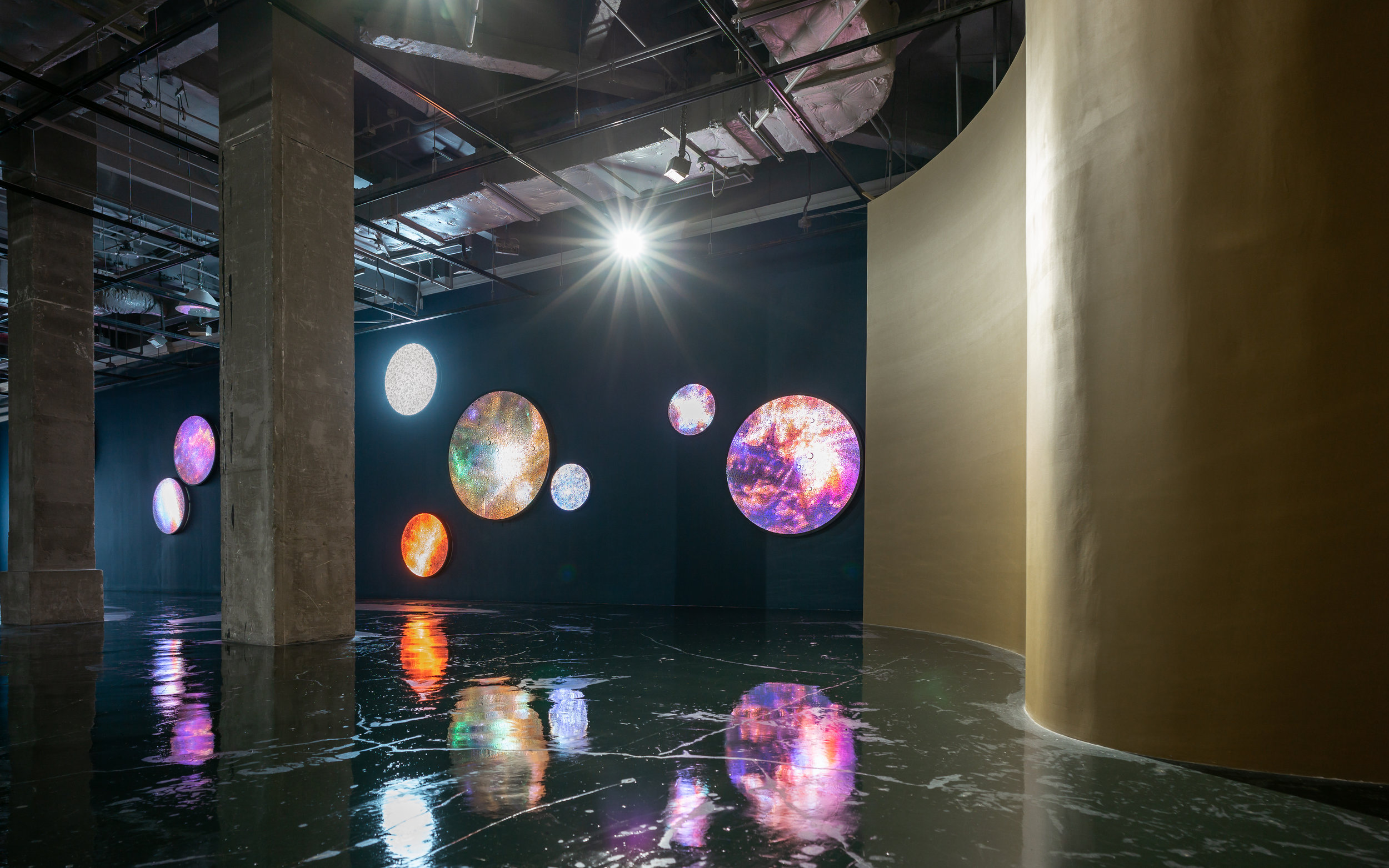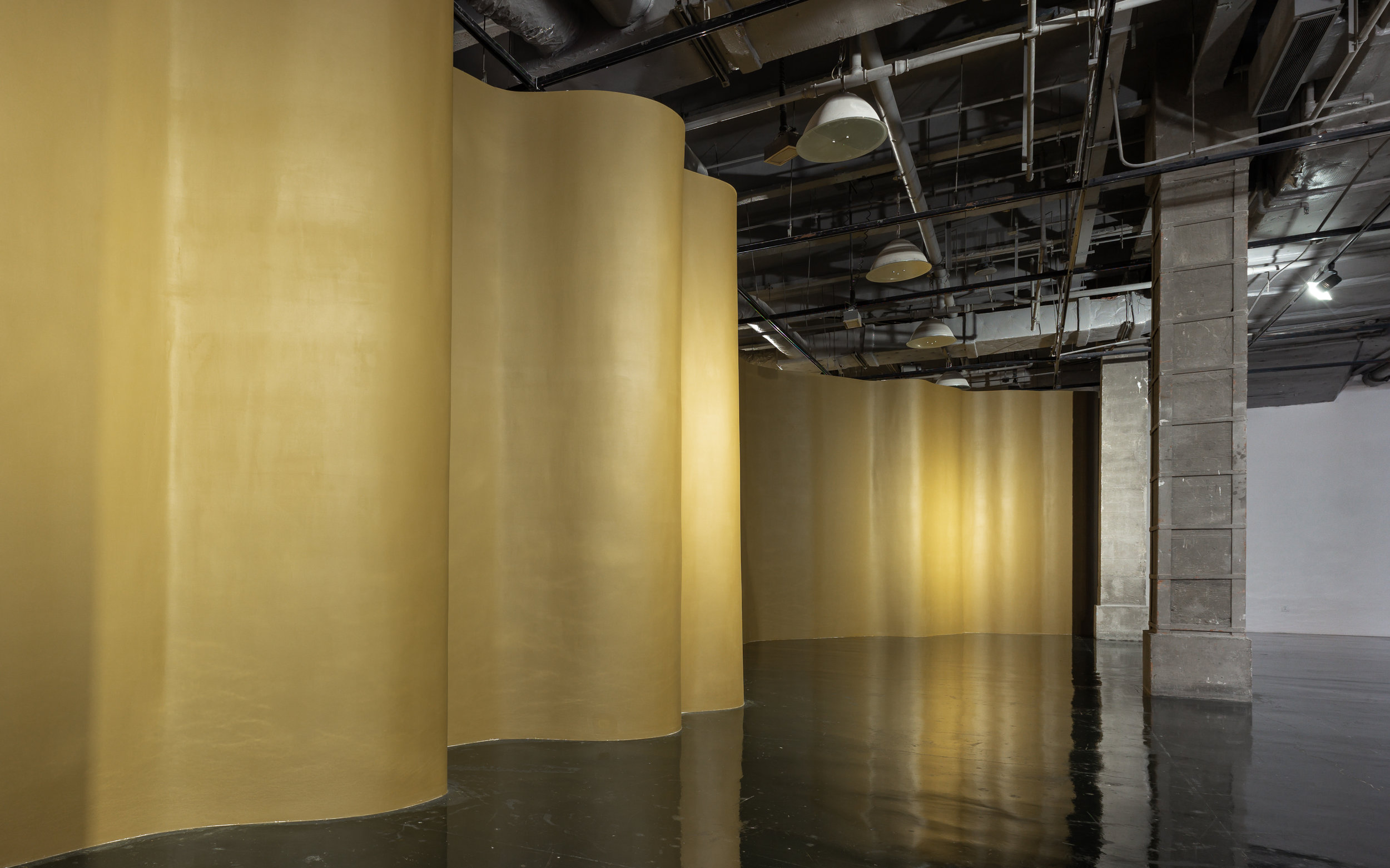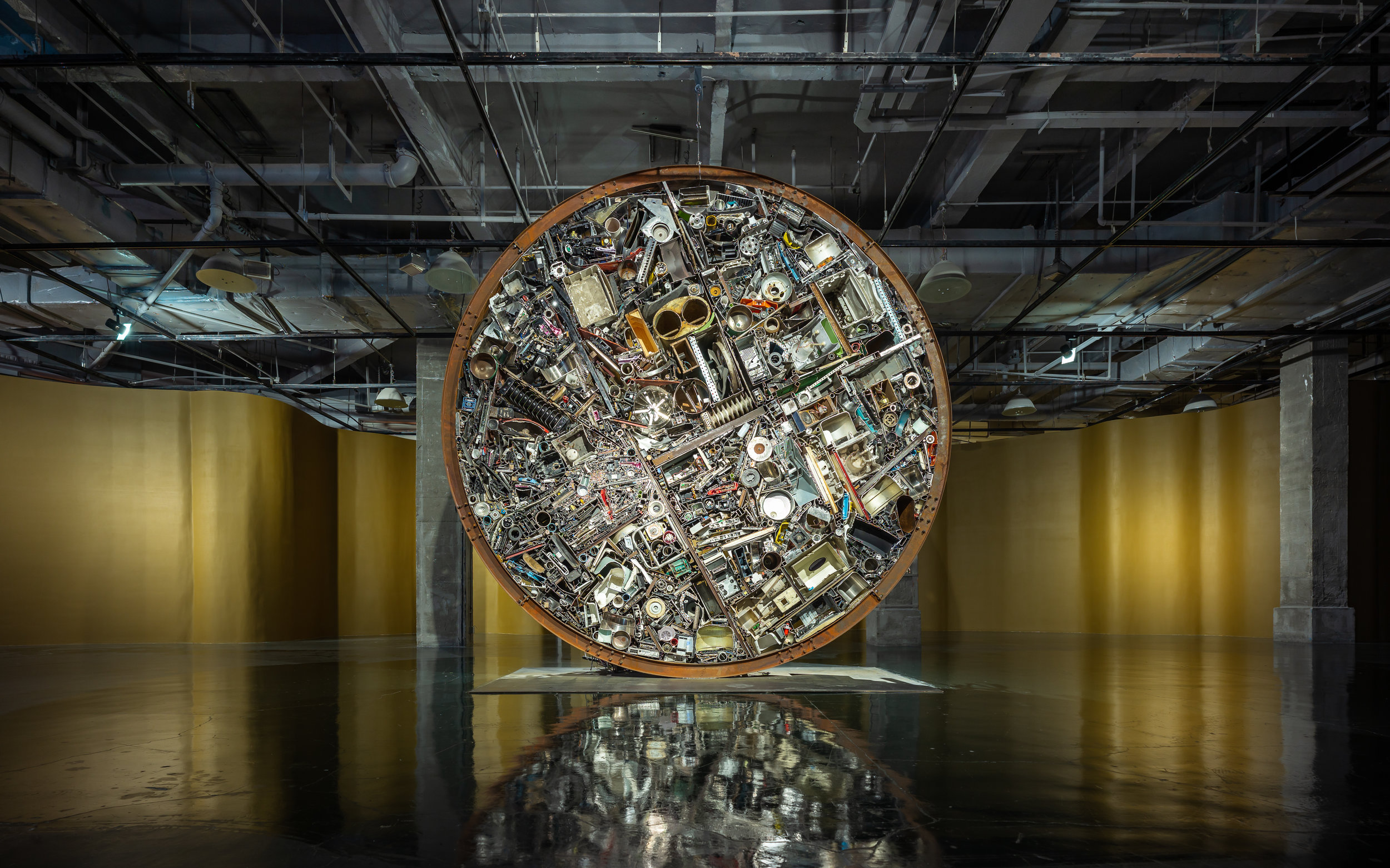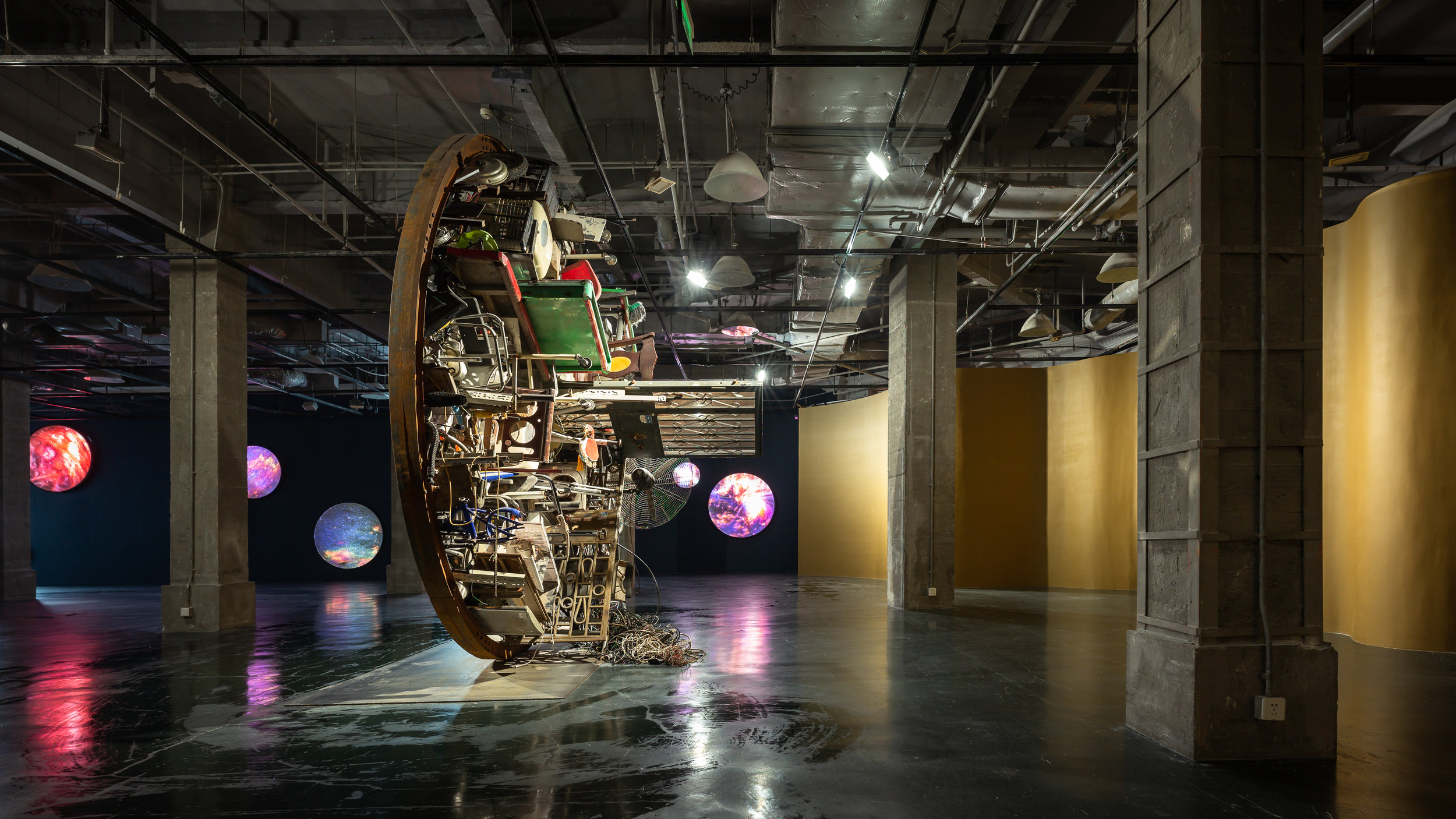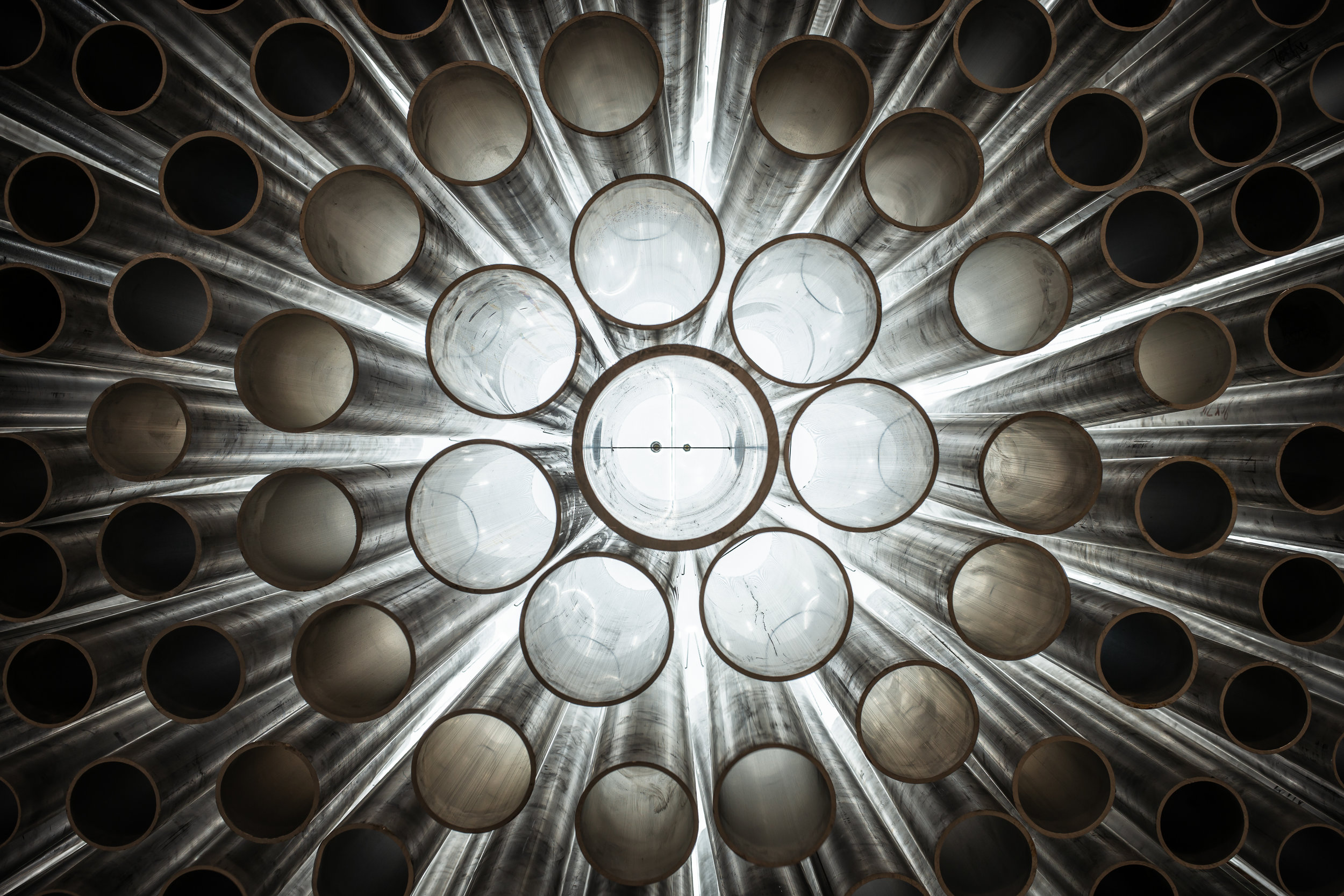Shanghai Gallery of Art is delighted to present Zheng Lu’s solo exhibition, “Partial Phenomenon”, marking the artist’s second exhibition at the gallery since his debut “Water from Water” in 2013. “Partial Phenomenon” will present entirely new styles of works. In the last few years, works by this talented young artist have left us with memorable and aesthetically pleasing impressions. Like the works he presented at the gallery in 2013, “Water from Water” where the artist welded hollow sculptures from stainless-steel sheets carved with Chinese characters, these works were visually articulate to embody a sophisticated intellectual emblem that was replete of lyricism. In his 2016 solo exhibition at the Long Museum, "Re-sist-ance”, Zheng Lu revealed a tendency to shift his practice that was once predominantly driven by literature and historical discourse. The sound installation “Re-sist-ance” addressed the simple physical phenomenon: “Resistance”, and reduced its artistic language tothe forms of “object” and “scale”. To a certain extent, “Re-sist-ance” was prescient of this exhibition, “Partial Phenomenon”.
In “Partial Phenomenon”, Zheng Lu’s art practice returns to the quest for essenceIn other words, for a world of sculpture (or any artistic form) reliant on the object for contemplation and inquiry, if one adopts the language of the artist or an ontological one for iteration, then it becomes an exploration about “reality”. “Partial Phenomenon” rejects philosophy and poetry, but attempts to answer the question of what reality is with new approaches and insights. It asks, “what is substance”? And what constitutes our existence? As the one who bears and explore this question, artist Zheng Lu is not a pioneer in doing so. There have been generations of scholars whose aim had been to appropriate philosophy, scientific speculation, and exploration in order to address and resolve these questions over the last thousands of years. While historical outcomes have undergone cycles of rejecting and subverting the predecessors, this process has nevertheless made people realize their own insignificance, their sluggish and unsophisticated perceptions, their broad yet unfocused scales, and their short existence. With the advent of highly advanced technologies available today, and those who try to reveal the various types of limitations in a course of development, the exhibition “Partial Phenomenon” draws from the same phonetics as “limitation”, its impetus is to extend a historical tradition, to assign answers to essence – “to offer insight to the essence.”
The exhibition, “Partial Phenomenon” on the one hand addresses some existing questions, in other words, hopes to offer “insight to reality”, for which the artist inspects the details, opens up the dimensions and expands on parameter; on the other hand, “Partial Phenomenon” underscores the phenomenon world of the “objects” from our perceptive surrounding. Confronted with this current condition, it is only by changing the position of our perception and parameter, would we be able to dive beneath the phenomenon and overcome the limitations in approaching and understanding the world. For artists in general, that’s no longer a new experiment, Auguste Rodin had put it, “There are only volume, not lines.” That’s a Newtonian statement, where as “Partial Phenomenon” encompasses extensions into many facts, while integrating a completely new, non-classical pre-supposition and harmonious structure, that’s contemporary and quantum view of the world, so a new methodology could be formulated. In the artist’s own words,
“To explore the dimensions is, in my view is relevant to the nature of things, a way of voicing my insights.” —Zheng Lu
For the methodology of “Partial Phenomenon”, Insubstaniality was the first work that marked the artist's exploration on the scale, characterized by distinctive and appealing visual features. Through scopes, the work shows microcosmic images of dissected organ tissues as well as pictures of the universe which is marcoscopical. Those sceneries are enlarged and distorted into purely aesthetical visual objects, from then on, deconstructed and lost its meaning. The work also shows how the change of scale influences on humankind and eventually deconstruct our perception, which is inarguably impressive and subversive — while similar to the human discovery from microscope to telescopes and Einstein’s proposal of relativity, Zheng Lu’s subversion also began from the shifting of scale. Insubstaniality is direct, purely beautiful and convincing.
The Immanent Path Below and The Pipe Aleph embody modern characteristics. Both adopt the mode of thinking from quantum physics, that aim to shift the observer’s position, and by expanding the parameters of the world, one attempts to re-estimate it: for both works adopt common objects such as wine glasses and pipes to build up their volumes, presenting a certain height and suspense, forcing the viewer to adopt the oversight to see the objects in the works. In the course of viewing, their volumes in the three-dimensional physical space overpower people and subsequently assuage their impression. Thus, for the viewer, it becomes a two-dimensional experience – where the wine glass becomes an abstract surface of overlapping circles, while the pipe’s hollow center allows light to penetrate through the gaps of the surface, and the light following the gravitational direction lingers on in the space – glasses are no longer glasses, pipes are no longer pipes, everyday objects can be deconstructed, transformed into something else what are different from their original forms as a consequence of expanded scales or the observer's way of viewing. Similar to quantum measurements, the limitations of the observer incurultimate shortcomings: so were the quantum atoms observed, as the artist has once stated,
“The property of the object would only become apparent in relation to something else.”
Grounded on the same principle, 1:2454 transforms the Huangpu River to a different scale. Zheng Lu takes the windows by the river as a point of inception and reduces the Huangpu River’s contours based on this point. Then, he expands the upper and lower shores of the river into surfaces – the surface of the river has vertically expanded to 3.5 meters, and its spatial existence becomes a
winding and frontal wall; like Paul Cezanne’s Mount Saint-Victoire, where the distance between the viewer and the mountain was compressed through its double perspectival points, “Huangpu River” adroitly becomes the analogy for the relationship between the viewer and the external world through simple mathematical principles and subversive spatial notions. Another work in this exhibition, Tongzhou Values Map presents the contrary, where the 3D urban area is compressed into a two-dimensional city consisted of dots, lines, and surfaces.
Column and Ma Fei’s Belongings are the most related works in “Partial Phenomenon”, which share the qualities of “cutting”. Column is one that has been cut open vertically, while its internal space is stacked with brick; likewise, for Ma Fei’s Belongings, everyday items are cut into stout cylindrical shapes, including televisions, engines, electric fans, so the qualities of these objects are isolate. Perhaps, they could be cutundeniably, because they are not the atom, or the basis of this world. However, regardless of one’s perception of these works of art, the artist forces the viewer to contemplate the extreme conditions for the action of “cutting”, that ultimately pushes one to consider the essential principles that constitute this world. In other words, what is substance? The latter tightly ties to “reality”. As the work interacts with the viewer’s thinking, where the stack of bricks in Column is a metaphor for Leibniz’s “monads”, while the latter hypothesized, “Things in this world constitute of monads, and as the monads of the substance, it cannot be divided, isolated, unifiedor ethical.” Where as in Ma Fei’s Belongings that the limitations in the compact round forms could be construed as a metaphor for discrete in quantum physics that, “There is a limit to any physical system of related information, which is determined by the Planck constant.”
“Partial Phenomenon” began with the notion of dimension, and had soon expanded to a series of explorations on scale, space, and substance, without providing a definitive conclusion and answer for the ultimate quest for “existence & reality”. However, like what artist Zheng Lu stated, his wish is to be “grounded on the insight of reality”. The artist wittily switched and renewed the “insight” on the observation and thinking in the language of art. This kind of insight can be considered a kind of restoration or reset, in “Partial Phenomenon”, where the artist re-examines and surveys the world around him, taking command of the materials for art making. All of which seems to dial back to the birth of art, the moment when the human idea began to integrate with materials, what Aristotle calls the birth of “form”; once this reset is completed, how would art be produced there after? In relation to the reset of scientific notions of our time, does it mean a brand new artistic language will also beborn? Would it expand the dimensions of art? Perhaps we could find the answers in Zheng Lu’s works.
“These forms are already inherent of the marbles, I’ve only taken out the unnecessary parts.” — Michelangelo Buonarroti




